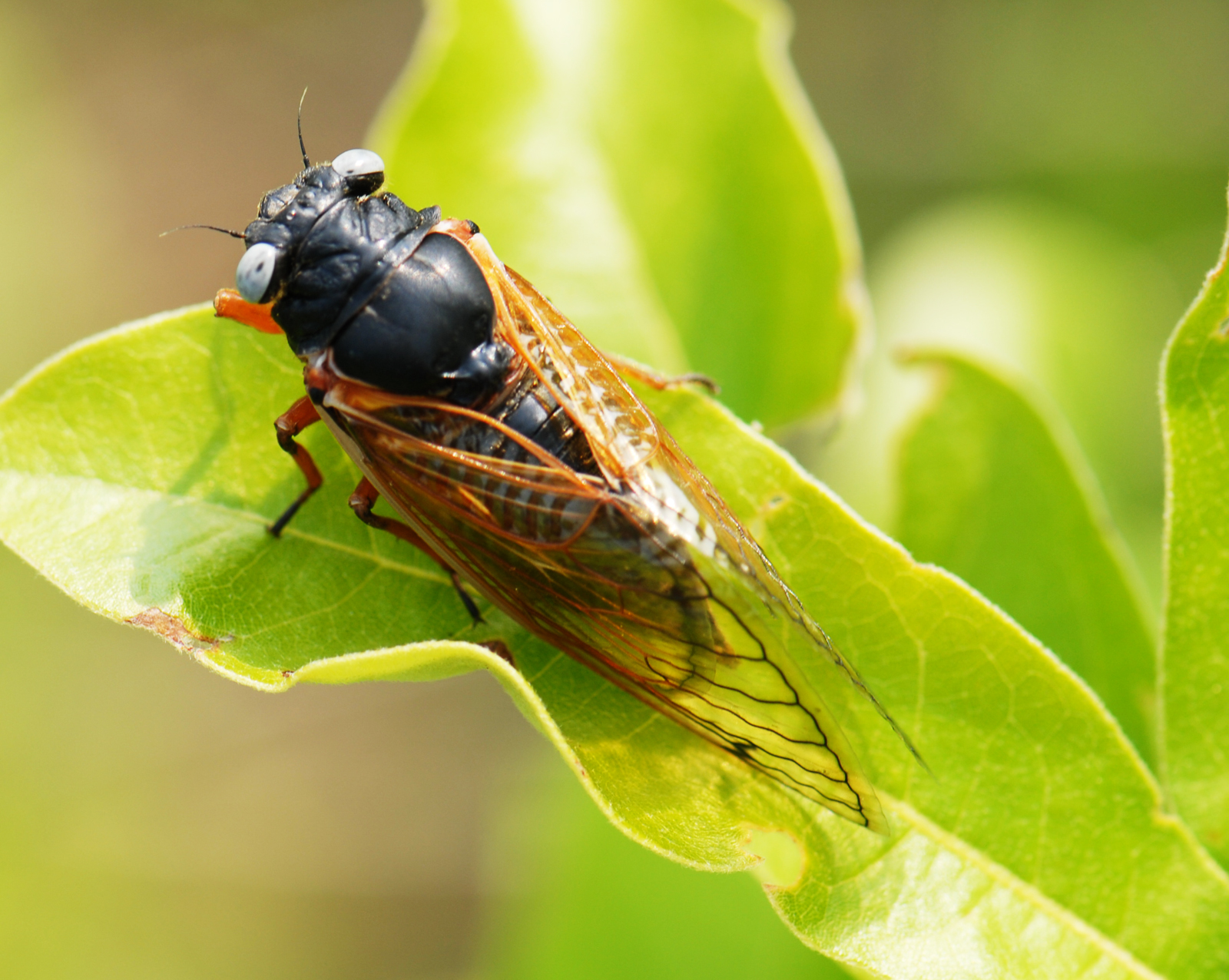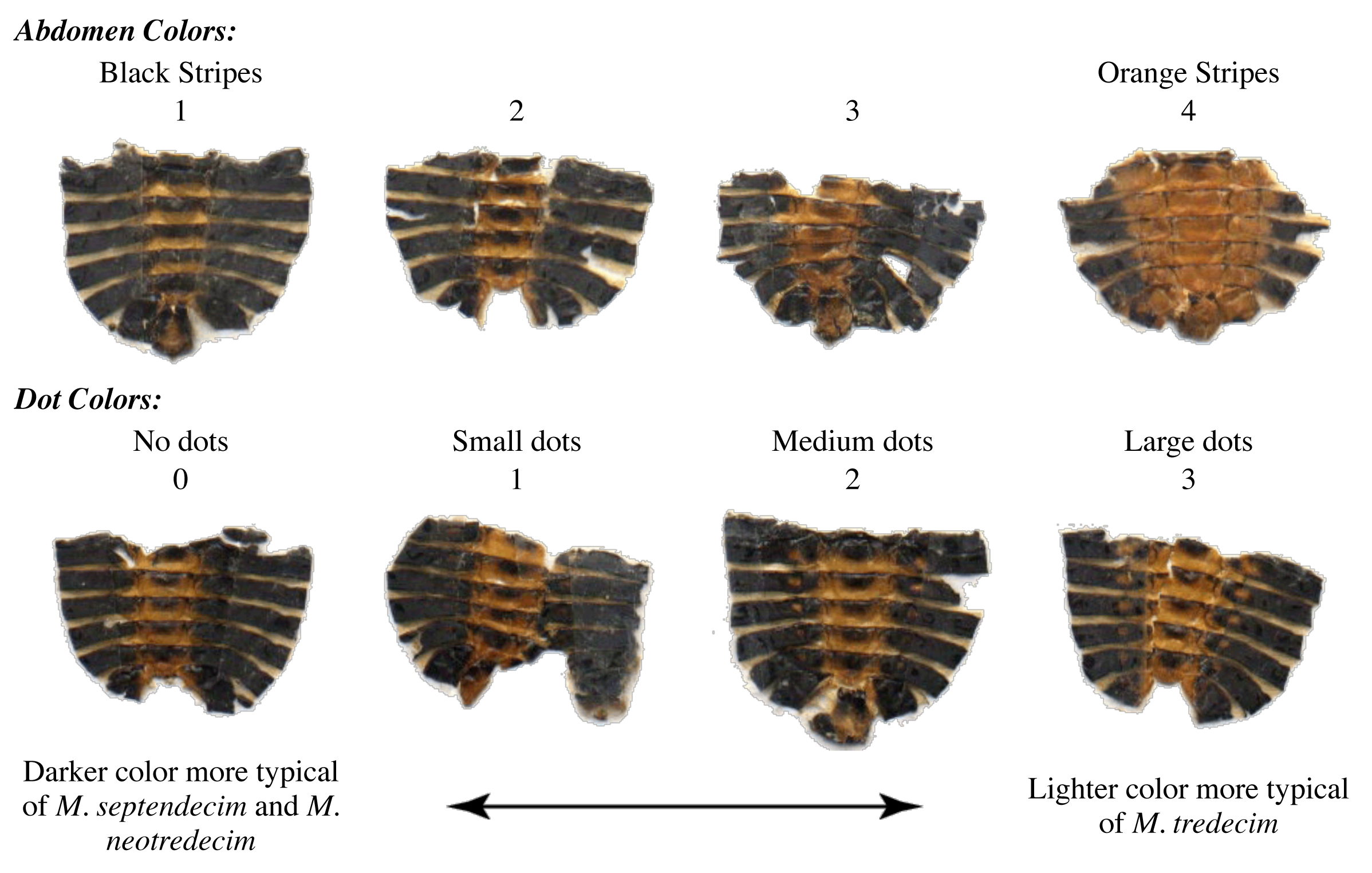
Some cicadas have white or blue eyes, and some lack red pigmentation on their wing veins. These color variations are natural and are presumed to be caused by mutations or rare alleles. Individuals of all periodical cicada species can be found exhibiting these variations.
The -decim species (M. septendecim, M. neotredecim, and M. tredecim) have orange abdominal stripes. However, there is significant variation in the appearance of the stripes; M. septendecim and M. neotredecim (mitochondrial lineage “A”) tend to be darker in appearance, while M. tredecim (mitochondrial lineage “B”) tend to be lighter.

Literature